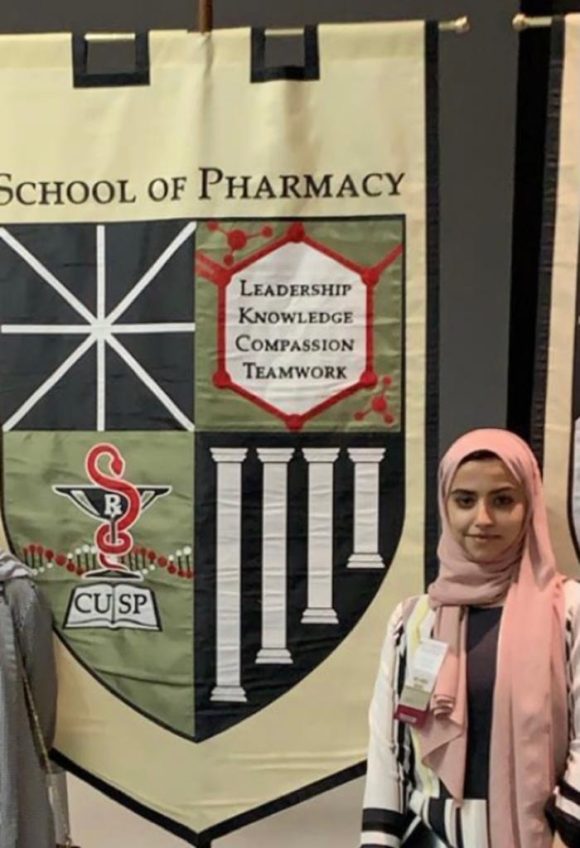
Qamar Alshammari (Ph.D. ’22) had her research on spectral imaging published in Nanoscale, a prestigious journal by the Royal Society of Chemistry, while still a doctoral candidate in Chapman University School of Pharmacy (CUSP).
Spectral imaging is a technique that that uses multiple bands across the electromagnetic spectrum. The spectral imaging system was first introduced by NASA and the remote earth sensing community for monitoring temperature change and weather patterns. This type of imaging allows scientists to see incredibly detailed information in tissue or cell samples. Alshammari’s research builds on these techniques to include imaging at nano scales — the study of structures the size of a billionth of a meter.
“The current existing techniques use mass spectroscopy and electron microscopy, in which the biological samples need to be destroyed or fixed. The importance of our technology is that we could now see these unlabeled nano structures in any biological samples without destroying or fixing the samples,” says Alshammari, who graduated in May with a major in biomedical and pharmaceutical sciences and concentration in pharmacology.
“Such a discovery can have a major impact in pharmacy research, [specifically] investigating a drug’s population within cells,” adds Nir Katzin, chief technology officer at Applied Spectral Imaging, who participated in the spectral imaging system and software analysis of the project.
The research involves expertise from many different fields: optical physics, biology, chemistry, nanomedicine and artificial intelligence.
This approach serves as a valuable technique to measure the distribution, dynamic movement, and behavior of nanoparticles and drug molecules used in biomedical research and clinical medicine. So far, Alshammari has used the technique to study drug delivery and metabolism.
Alshammari will now begin a new position as assistant professor of pharmacology at Northern Border University in Saudi Arabia. Her first order of business is to establish a spectroscopic lab.
She credits CUSP with providing the tools to launch her career and nurture the next generation of scientists.
“Chapman University School of Pharmacy has the most advanced instruments, which has given me the opportunity to learn new applications and techniques as well as strengthen my research outcomes,” says Alshammari, who also earned an M.S. in pharmaceutical sciences from Chapman and a Pharm.D. from Northern Border University in Saudi Arabia. “The instructions, encouragement and guidance of the CUSP faculty have been central to my accomplishments – they gave their attention, timely suggestions and shared in my enthusiasm throughout my academic journey.”




